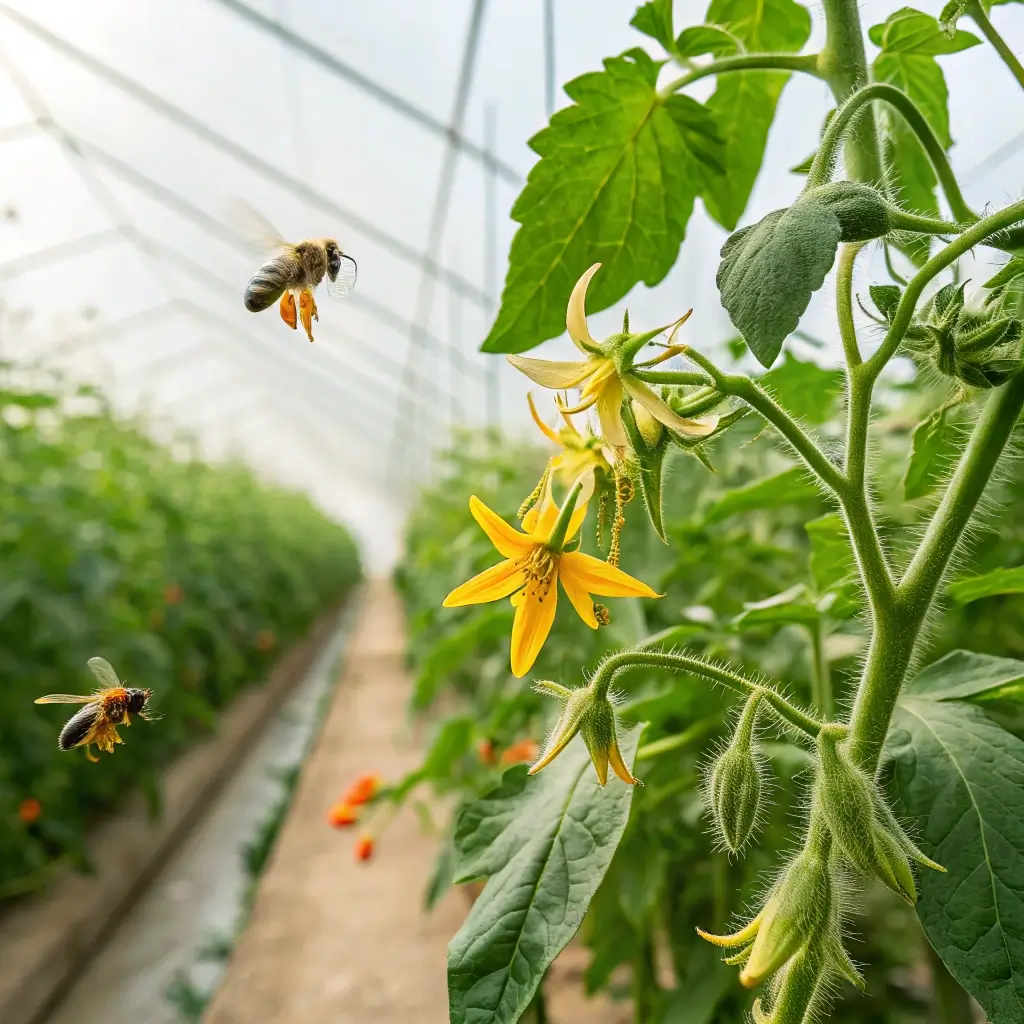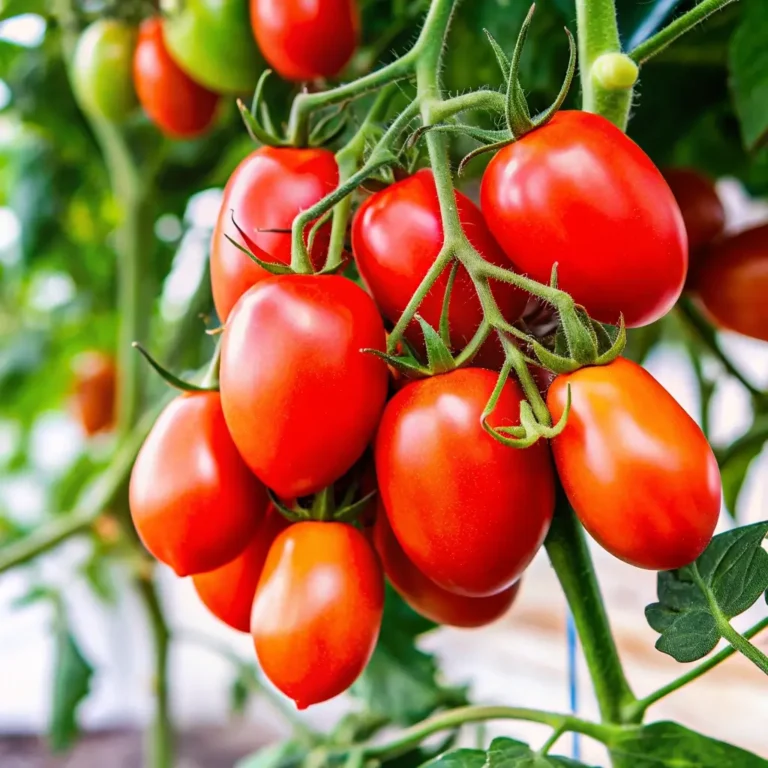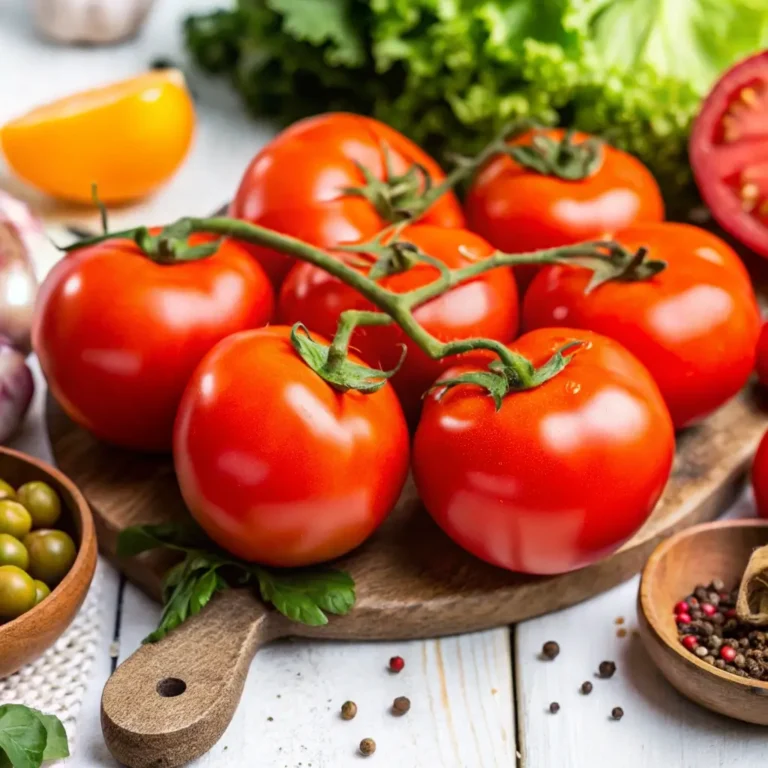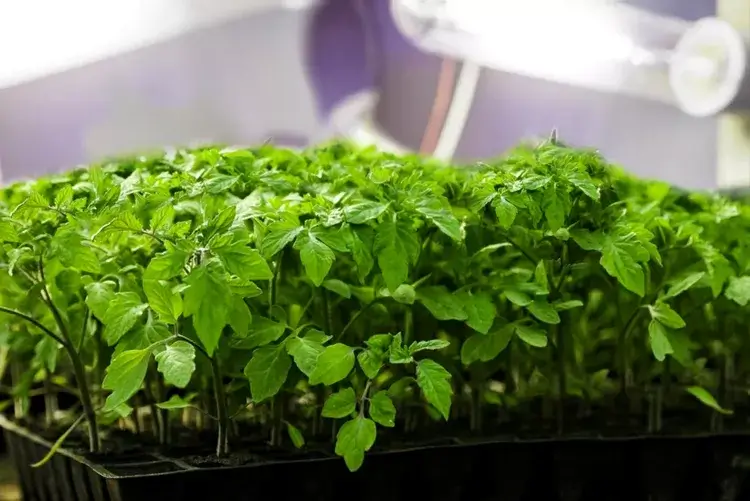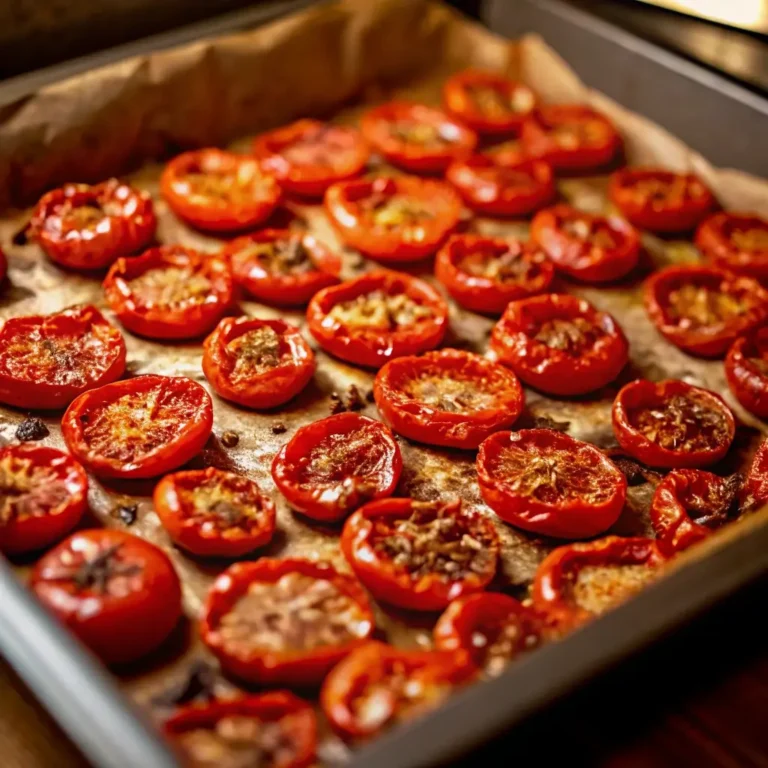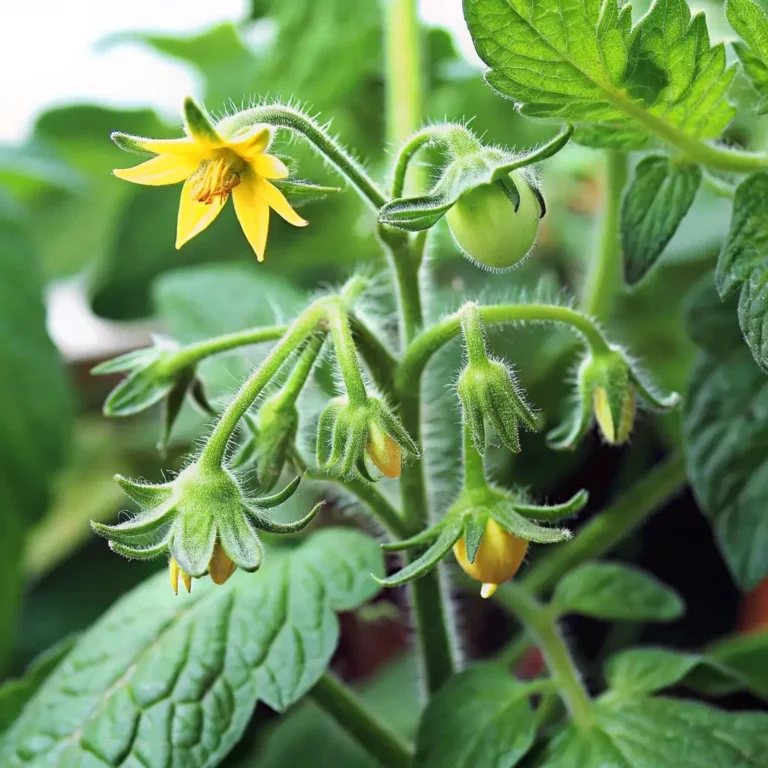How to Pollinate Your Tomato Plants for a Bountiful Harvest: 5 Easy Steps
Table of Contents
Introduction
Did you know that indoor tomato plants can produce up to 40% less fruit without proper pollination? While outdoor tomatoes benefit from natural pollinators like bees and wind, those grown indoors or in greenhouses often struggle without human intervention. Learning how to pollinate your tomato plants for a bountiful harvest can be the difference between a disappointing yield and baskets overflowing with juicy tomatoes. Many gardeners focus solely on watering and fertilizing, overlooking the crucial role of pollination in fruit development. This guide will walk you through simple, effective techniques to ensure your tomato flowers transform into the harvest you’ve been dreaming of.
Tools You’ll Need
- A small, clean paintbrush (preferably with soft bristles)
- An electric toothbrush (optional but effective)
- A small stick or chopstick
- Plant-safe gardening gloves
- Small paper bag or collection tray (for collecting excess pollen)
- Spray bottle with room temperature water (for misting)
Possible Substitutions: No paintbrush? A cotton swab works well in a pinch. The back of a dry spoon can replace a stick for tapping stems. And if you don’t have an electric toothbrush, any small vibrating device will work similarly.
Timing
Best Time to Pollinate: Early morning (9-11 AM)
Frequency: Every 2-3 days during flowering period
Duration per Plant: 1-2 minutes per plant
Total Time Investment: 10-15 minutes for an average home garden of 8-10 plants
Interestingly, pollinating in the morning is 35% more effective than afternoon pollination, as pollen is most viable when temperatures are between 65-75°F with moderate humidity.
Step-by-Step Instructions
Step 1: Identify Flowers Ready for Pollination
Tomato flowers must be fully open for successful pollination. Look for bright yellow blooms that have completely unfurled their petals. Each flower contains both male and female parts (they’re “perfect flowers”), making them self-pollinating when given proper assistance. Focus on clusters where several flowers are open simultaneously for maximum efficiency.
Pro Tip: Skip flowers that appear wilted or brownish—these are either past their prime or weren’t pollinated in time.
Step 2: Create the Right Environment
Tomatoes pollinate best in specific conditions: temperatures between 65-80°F (18-27°C) with 40-70% humidity. If growing indoors or in a greenhouse, ensure proper air circulation with a gentle fan set on low. Before pollinating, lightly mist the surrounding air (not directly on flowers) to increase humidity if your growing environment is particularly dry.
Pro Tip: Avoid pollinating during extreme temperature conditions—pollen becomes sterile above 85°F or below 55°F, reducing success rates by up to 70%.
Step 3: Use the Vibration Method
Tomato flowers naturally release pollen when vibrated by wind or bees. Recreate this by:
- Hold an electric toothbrush (turned on) near but not touching the flower cluster for 2-3 seconds.
- Move methodically from cluster to cluster, focusing on fully opened flowers.
- You should see a small cloud of yellow pollen released—this indicates successful vibration.
Pro Tip: Hold a dark piece of paper beneath the flowers while vibrating to confirm pollen release—you’ll see tiny yellow specks if you’re doing it correctly.
Step 4: Try the Manual Transfer Method
If you don’t have an electric tool, manual pollination works wonderfully:
- Use a small, soft paintbrush and gently swirl it inside each flower.
- Move from flower to flower, transferring pollen as you go.
- Focus on reaching the central parts of each flower where the stigma (female part) is receptive.
Pro Tip: For larger gardens, collect pollen from several flowers in a paper bag by gently shaking the stems, then use your brush to apply this collected pollen to other flowers for cross-pollination, which can increase fruit size by up to 15%.
Step 5: Tap the Stems Method
The simplest method requires no special tools:
- Gently tap the stems behind flower clusters with your finger or a stick.
- Use enough force to create a noticeable vibration without damaging the plant.
- Repeat for each flowering stem, focusing on the larger clusters.
Pro Tip: Combine methods for best results—tap stems one day and use the brush technique the next for a 30% higher pollination success rate.
Nutritional Information
Home-pollinated tomatoes often contain up to 40% more lycopene (a powerful antioxidant) than store-bought varieties. A medium-sized homegrown tomato typically provides:
- Calories: 22
- Vitamin C: 28% of daily recommended intake
- Vitamin A: 20% of daily recommended intake
- Potassium: 292mg
- Fiber: 1.5g
Studies show that hand-pollinated tomatoes often develop more evenly and contain higher concentrations of flavor compounds, enhancing both nutrition and taste.
Healthier Growing Alternatives
- Organic Options: Use seaweed extract instead of chemical fertilizers to boost flowering by up to 25%.
- Companion Planting: Grow basil or marigolds nearby to attract natural pollinators and reduce pest pressure by up to 38%.
- Water Management: Implement drip irrigation rather than overhead watering to reduce disease by 60% while conserving water.
- Natural Pest Control: Introduce ladybugs to your garden to manage aphids naturally, protecting delicate flowers from damage.
Serving Suggestions for Your Harvest
- Create a “garden-to-table” bruschetta with freshly harvested tomatoes, torn basil, and extra virgin olive oil.
- Preserve excess harvest by slow-roasting with herbs and freezing in olive oil.
- Blend overripe tomatoes into gazpacho or fresh pasta sauce, capturing peak nutrition.
- Try green tomato varieties in tangy relishes or fried green tomato recipes for variety.
Common Pollination Mistakes to Avoid
- Over-Pollinating: Touching flowers more than once daily can damage delicate parts, reducing success by 25%.
- Wrong Timing: Pollinating during midday heat reduces viability by up to 60%—stick to morning hours.
- Excessive Misting: Too much moisture can cause pollen to clump and become ineffective.
- Ignoring Environmental Factors: Proper airflow is essential—stagnant air reduces pollination success by 45%.
- Forgetting Succession: Not pollinating new flowers as they open can result in uneven harvests.
Storing Tips for Your Tomato Harvest
- Harvest regularly to encourage continued production—picking mature fruits increases yield by up to 30%.
- Store ripe tomatoes stem-side down at room temperature, never in the refrigerator (cold temperatures degrade flavor compounds by 45%).
- For longer storage, preserve through canning, freezing, or dehydrating—each method retains different nutritional benefits.
- Green tomatoes can ripen off the vine when stored with a banana, which releases ethylene gas to accelerate ripening.
Conclusion
Mastering how to pollinate your tomato plants for a bountiful harvest is an empowering skill that connects you directly to your food production. By following these five simple steps—identifying ready flowers, creating the right environment, using vibration, manual transfer, and stem tapping—you’ll dramatically increase your yield and enjoy the unmatched flavor of perfectly developed tomatoes. The few minutes spent pollinating several times a week can increase your harvest by as much as 200% over the season. Now that you understand the secrets to successful tomato pollination, which method will you try first with your plants?
FAQs
Q: How can I tell if my tomato flowers have been successfully pollinated?
A: Successfully pollinated flowers will show tiny fruit development within 2-3 days, while unpollinated flowers will yellow and drop off. Look for a small green nub forming at the flower base.
Q: Is pollinating necessary for all tomato varieties?
A: Yes, all tomato varieties benefit from pollination assistance when grown indoors or in areas with limited natural pollinators. However, some newer hybrid varieties have been bred to be more efficient at self-pollination.
Q: Can I pollinate tomatoes in high humidity environments?
A: While tomatoes prefer moderate humidity (40-70%), excessively humid environments (above 80%) can cause pollen to become too sticky and ineffective. In high humidity, focus on improving air circulation rather than additional misting.
Q: How often should I pollinate my tomato plants?
A: For optimal results, pollinate every 2-3 days throughout the flowering period. Consistency is key—regular pollination yields 40% more fruit than sporadic efforts.
Q: Will pollination affect the taste of my tomatoes?
A: Proper pollination ensures complete seed formation, which directly influences fruit development and flavor compounds. Well-pollinated tomatoes typically contain 30% more sugars and flavor-enhancing amino acids than poorly pollinated fruits.

